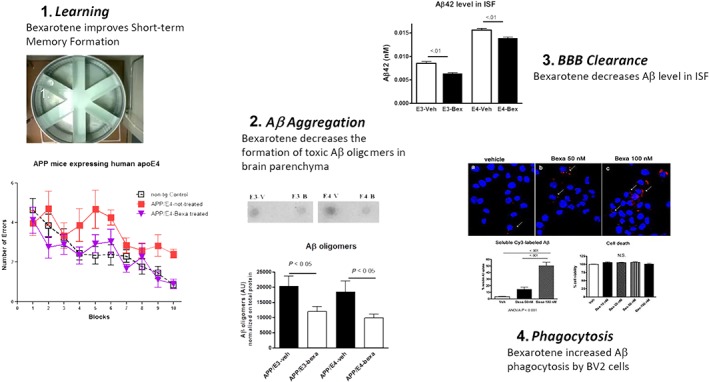Figure 2.

Therapeutic potential of bexarotene to ameliorate pathological phenotype of Alzheimer's disease mouse model. (1) Treatment with bexarotene (7 days) was shown to reverse cognitive decline, social, and olfactory deficits in APP/PS1 mice as well as short‐term memory deficits exhibited by APOE4 expressing mice (modified from Fitz et al., 2013). (2) Bexarotene application decreases the formation of toxic Aβ species in brain parenchyma, which have been associated with diminished cognitive performance (Fitz et al., 2013). (3) Using in vivo microdialysis groups have shown that bexarotene significantly decreases the amount of soluble Aβ in the interstitial fluid, suggesting an increased clearance rate of Aβ. This has been highlighted as one of the possible beneficial effects of bexarotene treatment on AD pathogenesis (Fitz et al., 2013). (4) The increased clearance rate of Aβ could be due to accelerated microglial phagocytosis of Aβ following treatment with bexarotene in culture (Hilyte‐labelled Aβ is phagocytosed after bexarotene treatment; Lefterov et al., 2015)
